Chopta Chandrashila Trek 2025 - Cost , itinerary & safety tips
Published on April 02, 2025
Chopta Chandrashila Trek : Are you planning a trip to the Himalayas in 2025? If yes, then the Chopta Chandrashila Trek is one of the best options for adventure lovers and nature enthusiasts. This trek offers breathtaking views, serene landscapes, and a chance to explore some of the most sacred places in Uttarakhand. Whether you are traveling from Delhi or nearby regions, this guide will help you plan your trip with detailed information about costs, itineraries, and safety tips.
Why Choose Chopta Your Package?
If you're looking for a hassle-free experience, booking a Chopta tour package is the way to go. These packages include everything from transportation to accommodation, meals, and local guides. With TourMyHoliday's Chopta tour packages , you can enjoy the beauty of the Himalayas without worrying about logistics. From the Chopta Tungnath Trek to the Chandrashila Summit Trek , these packages ensure that you have a memorable journey.

Cost of Chopta Chandrashila Trek 2025
The cost of the Chopta Chandrashila Trek varies depending on factors such as group size, type of accommodation, and inclusions. On average, the cost ranges between ₹6,000 to ₹10,000 per person for a 3-day trip. Here’s a detailed breakdown:
Transportation
- Delhi to Chopta and Back: ₹3,000 - ₹4,000
Traveling from Delhi to Chopta involves a long road journey of approximately 10-12 hours. Most packages include private or shared vehicles, ensuring a comfortable ride.
Accommodation
- Homestay/Camping: ₹1,500 - ₹2,500
Accommodation options range from cozy homestays in Sari Village to camping under the stars in Chopta . Both options provide a unique experience of staying close to nature.
Meals
- Food Expenses: ₹500 - ₹800
Most Chopta tour packages include vegetarian meals such as breakfast, lunch, and dinner. The food is usually prepared using fresh, locally sourced ingredients.
Guide Fees
- Local Guide: ₹500 - ₹1,000
A local guide is essential for navigating the trails, especially during the Tungnath Temple Trek and Chandrashila Summit Trek . Guides also share interesting stories about the region’s history and culture.
Permits and Entry Fees
- Forest Permits: ₹200 - ₹500
Some areas of the trek require forest permits, which are included in most tour packages.
Additional Costs
- Personal Expenses: ₹500 - ₹1,000
This includes expenses for snacks, souvenirs, and any optional activities like bird watching or photography.
Total Estimated Cost
For a group of 4-6 people, the total cost of the Chopta Chandrashila Trek typically ranges between ₹7,000 to ₹10,000 per person. Booking a complete Chopta tour package from Delhi is often more economical than arranging everything separately.

Detailed Itinerary for Chopta Chandrashila Trek
Here’s a day-by-day breakdown of the Chopta Chandrashila Trek itinerary:
DAY 0: Delhi to Rishikesh to Sari Village
- Start Time: Depart from Botanical Garden Metro Station at 10:00 PM.
- Overnight Journey: Begin your journey towards Sari Village via Rishikesh.
- Stop at Devprayag: Witness the confluence of the Bhagirathi and Alaknanda rivers, known as the Devprayag Sangam . This holy site is a must-visit for spiritual travelers.
DAY 1: Sari Village to Deoriatal
- Arrival at Sari Village: Check into your homestay and freshen up.
- Trek to Deoriatal: Start your trek to Deoriatal , a tranquil high-altitude lake located at an elevation of 2,438 meters. The 2.5 km trek takes around 1.5 to 2 hours.
- Enjoy Deoriatal: Spend some time relaxing by the lake and admiring its stunning reflections of the surrounding mountains.
- Return to Sari Village: Head back to your homestay and enjoy the evening in peace.
DAY 2: Sari Village to Tungnath & Chandrashila
- Breakfast: Have a hearty breakfast at your homestay.
- Drive to Chopta: Travel to Chopta , which is about 1 hour from Sari Village .
- Trek to Tungnath Temple: Begin your trek to Tungnath Temple , the highest Shiva temple in the world. The 3.5 km trek is moderately challenging but rewarding.
- Summit Chandrashila: After visiting Tungnath, continue to Chandrashila Summit , located 1.5 km further. From here, you can witness panoramic views of the Himalayan peaks like Nanda Devi, Trishul, and Kedarnath.
- Return to Chopta/Sari: After completing your trek, head back to your campsite or homestay for an overnight stay.
DAY 3: Chopta to Delhi
- Breakfast: Enjoy an early breakfast at your camp in Chopta .
- Early Morning Departure: Leave Chopta early in the morning.
- Visit Dhari Devi Temple: Stop at Dhari Devi Temple , a revered shrine dedicated to Goddess Kali.
- Return to Delhi: The drive back to Delhi takes approximately 10-12 hours.

Places You Will Visit with TourMyHoliday Chopta Tour Package
Embarking on a Chopta Chandrashila Trek is not just about the thrill of adventure; it’s also about exploring some of the most enchanting places in Uttarakhand. From ancient temples steeped in spirituality to serene lakes surrounded by lush forests, this trek offers a diverse experience that combines nature, culture, and religion. Here’s an in-depth look at all the incredible places you’ll visit during your journey with our Chopta tour packages :
Tungnath Temple – The Highest Shiva Temple in the World
Located at an altitude of 3,680 meters (12,073 feet), Tungnath Temple is one of the most revered shrines in India. This ancient temple holds immense spiritual significance as it is part of the Panch Kedar , a group of five sacred temples dedicated to Lord Shiva. Legend has it that after the battle between the Pandavas and Kauravas in the Mahabharata, Lord Shiva took refuge in these five temples to avoid meeting the Pandavas.
What makes Tungnath unique is its breathtaking location amidst the snow-clad peaks of the Himalayas. As you trek up to the temple, you’ll pass through dense rhododendron forests and meadows dotted with wildflowers. During spring, the entire trail comes alive with vibrant red and pink blooms, creating a surreal atmosphere. Once you reach the temple, take a moment to soak in its serene ambiance and marvel at the intricate carvings that adorn its stone walls.
The temple itself is relatively small but exudes immense charm and divinity. Pilgrims from across the country visit Tungnath to seek blessings and connect with their spirituality. For trekkers, this site serves as the gateway to the Chandrashila Summit , making it both a cultural and adventurous highlight of the trip.
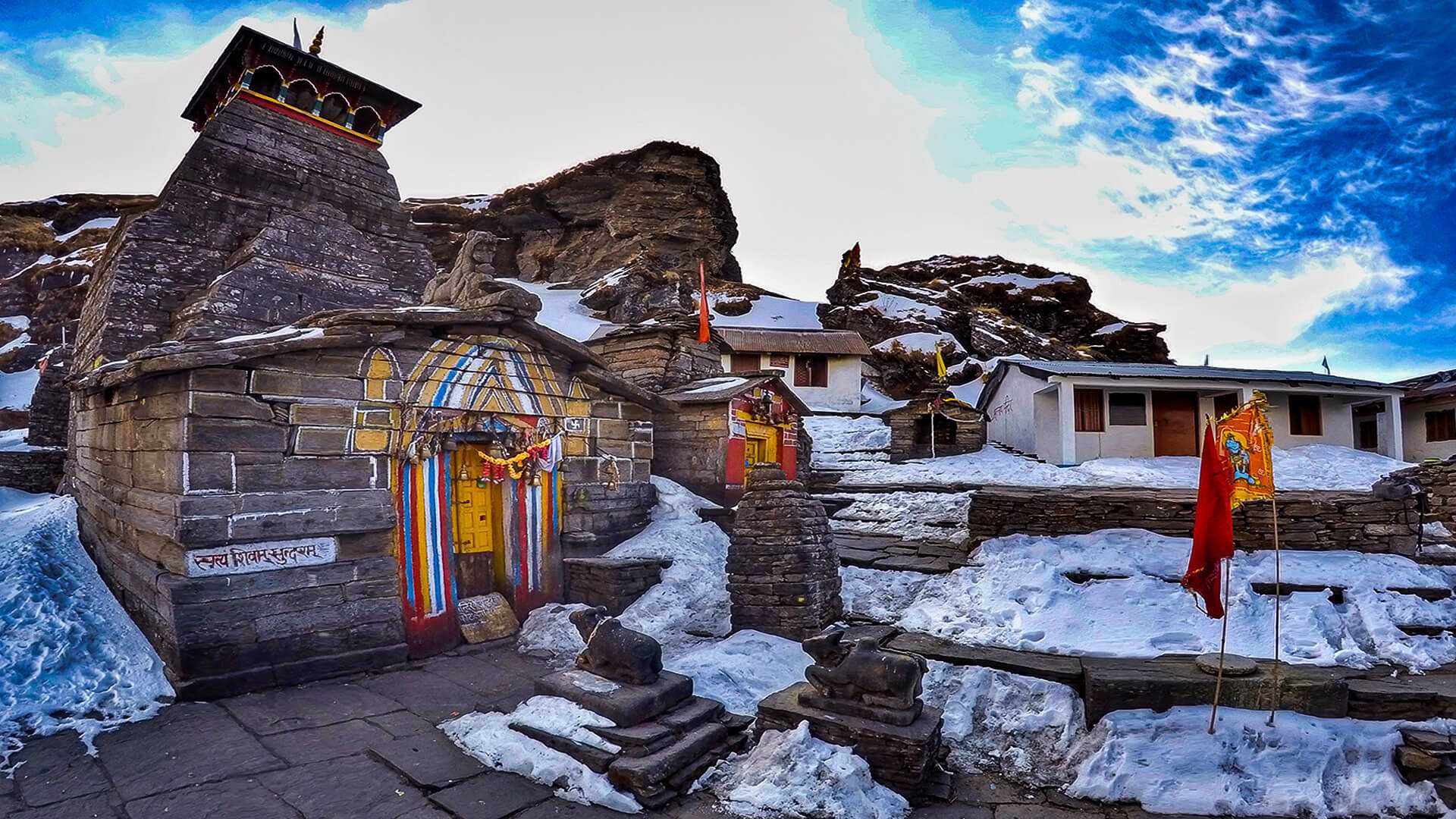
Chandrashila Trek – Witness Panoramic Himalayan Views
One of the most exhilarating parts of the Chopta Chandrashila Trek is summiting the Chandrashila Peak . Located approximately 1.5 kilometers above the Tungnath Temple, Chandrashila translates to “Moon Rock” in Sanskrit, and true to its name, it offers views so stunning they feel almost otherworldly.
As you ascend towards the summit, the terrain becomes rocky and steep, adding a bit of challenge to the trek. However, the effort is completely worth it once you reach the top. From Chandrashila, you can witness panoramic views of some of the tallest peaks in the Himalayas, including Nanda Devi , Trishul , Kedarnath , Chaukhamba , and Bandarpoonch . On clear days, the horizon stretches endlessly, offering a 360-degree view of snow-capped mountains bathed in golden sunlight.
Photography enthusiasts will find themselves in paradise here, as every angle presents a picture-perfect opportunity. Whether you’re capturing the majestic peaks or simply gazing at them in awe, the experience is nothing short of magical. Chandrashila is also known for its tranquility, making it an ideal spot for introspection and meditation.

Deoriatal – A Tranquil High-Altitude Lake
If there’s one place that perfectly encapsulates the essence of serenity, it’s Deoriatal . This high-altitude lake, situated at an elevation of 2,438 meters (7,999 feet), is a gem tucked away in the lap of the Himalayas. Surrounded by dense oak and rhododendron forests, Deoriatal reflects the towering peaks of the Himalayas in its crystal-clear waters, creating a mesmerizing mirror-like effect.
The trek to Deoriatal starts from Sari Village and covers a distance of approximately 2.5 kilometers. The trail is relatively easy, making it accessible even for beginners. Along the way, you’ll be greeted by lush greenery, chirping birds, and the soothing sound of rustling leaves. Once you arrive at the lake, take a moment to sit by its banks and admire the reflections of Chaukhamba and other peaks in the water.
Deoriatal is also a great spot for birdwatching. Keep your eyes peeled for rare species like the Himalayan Monal, Koklass Pheasant, and various migratory birds. During sunrise and sunset, the lake takes on a golden hue, making it an unforgettable sight. Whether you’re looking to relax, meditate, or capture stunning photographs, Deoriatal promises an experience that will stay etched in your memory forever.
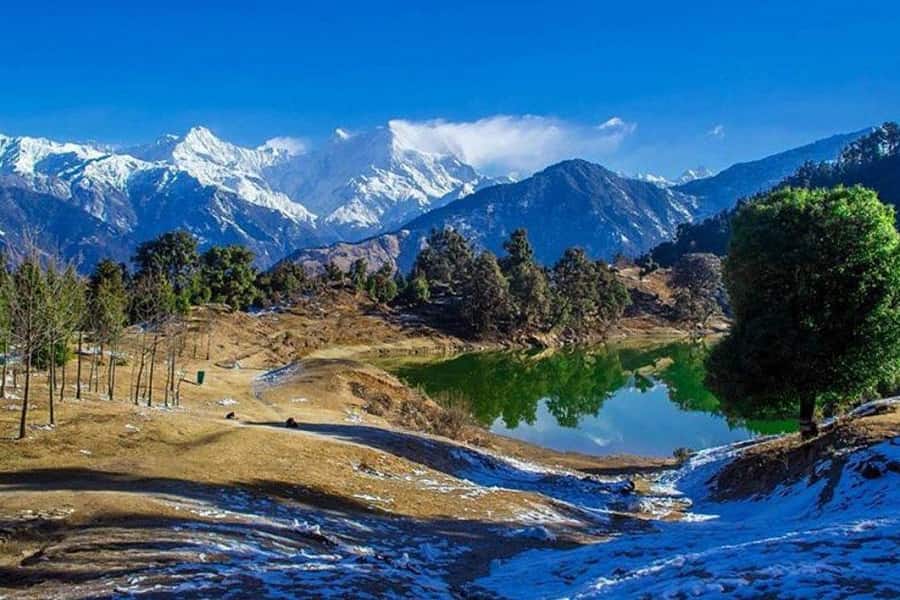
Camping & Bonfire – Sleep Under the Stars
No Chopta tour package is complete without the thrill of camping under the stars. After a day of trekking, there’s no better way to unwind than spending the night in a cozy tent surrounded by nature. Most packages include camping arrangements either near Chopta or Sari Village , depending on the itinerary.
Imagine lying down on soft grass, gazing up at the starlit sky, and listening to the gentle whispers of the wind. The absence of city lights allows you to witness the Milky Way in all its glory, a sight that few people get to experience in their lifetime. To add to the charm, bonfires are organized in the evenings, where you can gather around with fellow travelers, share stories, sing songs, and enjoy hot cups of tea or coffee.
Camping isn’t just about sleeping outdoors; it’s about connecting with nature and embracing simplicity. It’s an opportunity to disconnect from technology and immerse yourself in the raw beauty of the Himalayas. For many, this is the highlight of the trip—a chance to escape the hustle and bustle of daily life and find solace in the wilderness.

Wildlife & Bird Watching – Spot Rare Himalayan Species
The region around Chopta is a haven for wildlife enthusiasts and birdwatchers. Being part of the Kedarnath Wildlife Sanctuary , the area is home to a wide variety of flora and fauna, including several rare and endangered species. As you trek through the forests, keep an eye out for animals like the Himalayan Black Bear , Red Fox , Barking Deer , and the elusive Snow Leopard (though spotting one requires immense luck!).
For bird lovers, the region is nothing short of a paradise. Over 200 species of birds call this area home, including the iconic Himalayan Monal , which is also the state bird of Uttarakhand. With its iridescent plumage and graceful demeanor, the Monal is a sight to behold. Other notable birds include the Koklass Pheasant , Kalij Pheasant , Golden Eagle , and various species of warblers, thrushes, and finches.
Exploring the forests early in the morning or late in the afternoon increases your chances of spotting wildlife. Carry a pair of binoculars and a camera to capture these incredible moments. Even if you don’t spot any large mammals, the sheer diversity of birds and smaller creatures will leave you amazed.

Omkareshwar Temple – The Winter Abode of Lord Kedarnath
While Tungnath Temple gets most of the attention, another significant religious site along the trek is the Omkareshwar Temple . Located near Guptkashi, this temple serves as the winter abode of Lord Kedarnath when the higher-altitude temples become inaccessible due to heavy snowfall.
The temple is dedicated to Lord Shiva and features a unique lingam carved into the shape of the sacred syllable "Om." According to local legends, this lingam was discovered by sages who were searching for a divine presence in the region. Today, Omkareshwar Temple attracts thousands of devotees, especially during the winter months when pilgrims cannot visit Kedarnath.
Visiting Omkareshwar adds a layer of spirituality to your trek. Its peaceful surroundings and historical importance make it a worthwhile stop for those interested in exploring the cultural heritage of Uttarakhand.
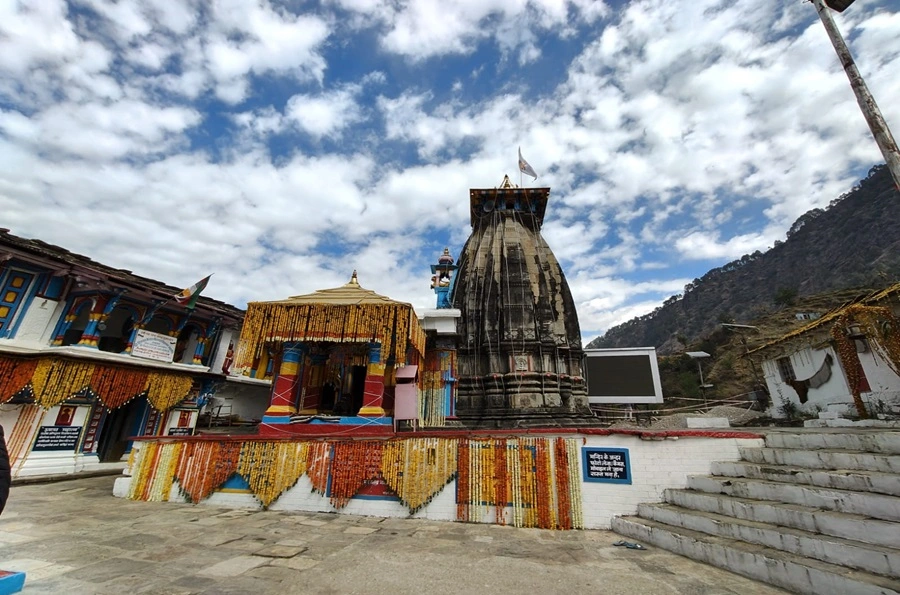
Dhari Devi Temple – A Revered Shrine of Goddess Kali
Before concluding your journey back to Delhi, make sure to pay your respects at the Dhari Devi Temple , located near Srinagar in Uttarakhand. This temple is dedicated to Goddess Kali and is believed to protect travelers embarking on journeys through the Himalayas.
According to mythology, Dhari Devi is an incarnation of Goddess Parvati who appeared in the form of a young girl to save the villagers from a demon. Her idol, though simple, radiates immense energy and devotion. Pilgrims often tie threads or offer flowers as tokens of gratitude.
Stopping at Dhari Devi Temple is considered auspicious and is a popular tradition among travelers returning from Chopta. It’s a peaceful and reflective way to end your trek before heading back to the city.
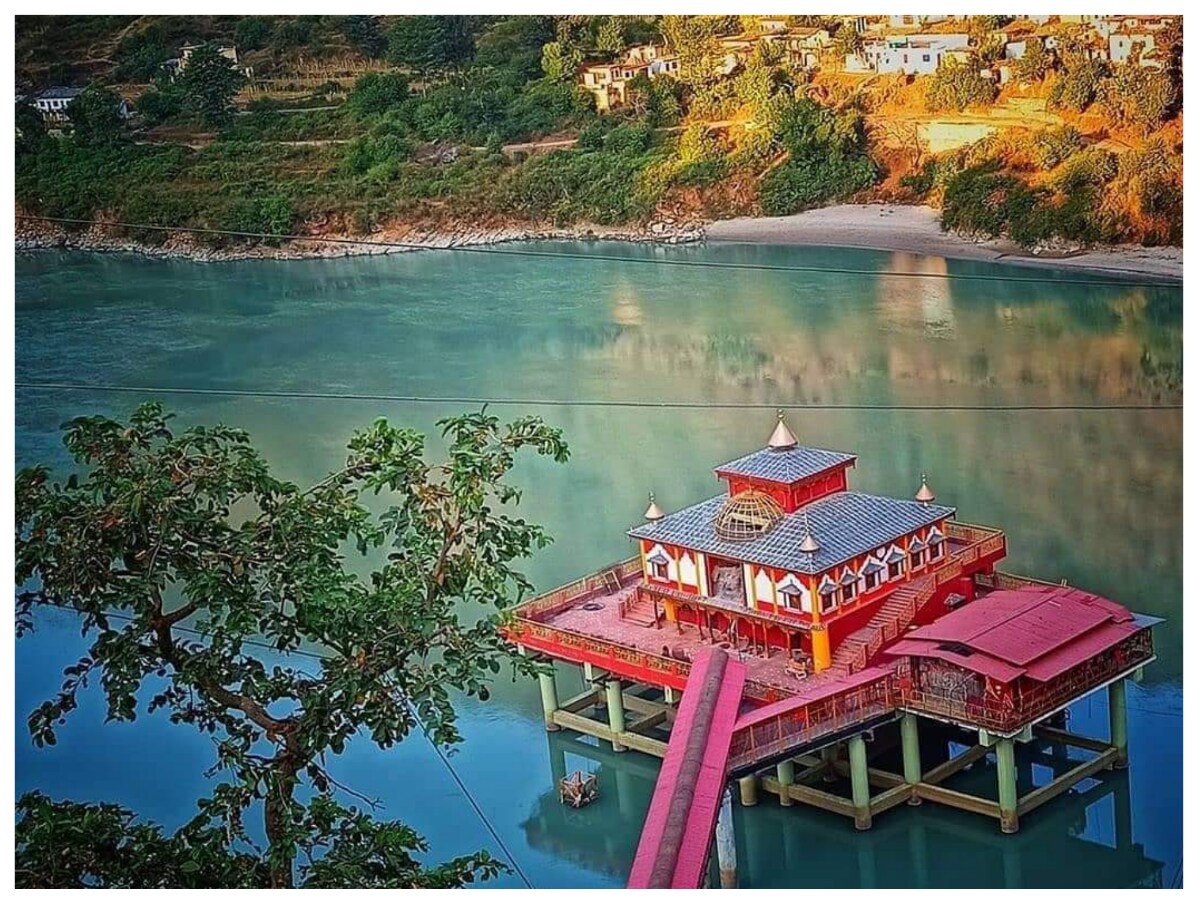
Devprayag Sangam – The Holy Confluence of Rivers
On your way from Delhi to Chopta, you’ll pass through Devprayag , a town famous for the confluence of two mighty rivers—the Bhagirathi and the Alaknanda . This meeting point, known as the Devprayag Sangam , marks the beginning of the holy river Ganges.
Devprayag holds immense religious significance in Hinduism. According to legend, King Bhagiratha performed penance here to bring the celestial river Ganga down to Earth to purify the souls of his ancestors. The swirling waters of the two rivers create a mesmerizing sight, especially during sunrise and sunset when the light dances off the surface.
Take some time to visit the nearby Raghunath Ji Temple , perched on a hill overlooking the confluence. The temple offers panoramic views of the surrounding valleys and is a serene spot for prayer and reflection.
These eight destinations collectively make the Chopta Chandrashila Trek a holistic experience that blends adventure, spirituality, and natural beauty. Whether you’re trekking to Tungnath, camping under the stars, or marveling at the wildlife, each place leaves an indelible mark on your heart. So pack your bags, book your Chopta tour package , and get ready for the journey of a lifetime!
Why Choose TourMyHoliday? Your Perfect Partner for the Chopta Chandrashila Trek
Planning a trek to the breathtaking Himalayas can be overwhelming, especially if you’re traveling from a distant city like Delhi. With so many logistics to handle—transportation, accommodation, permits, and guides—it’s easy to feel lost. That’s where TourMyHoliday comes in! Our Chopta tour packages are designed to make your journey hassle-free, memorable, and truly unforgettable. Here’s why choosing TourMyHoliday is the best decision for your adventure:
Expertly Crafted Itineraries
Our Chopta tour packages feature thoughtfully designed itineraries that balance adventure, spirituality, and relaxation. From the serene Deoriatal Lake to the majestic Chandrashila Summit , every destination is chosen to offer the best of nature and culture.
Affordable & Transparent Pricing
We believe in offering exceptional value without hidden costs. Our Chopta Chandrashila Trek packages are competitively priced, ensuring you get the most out of your trip without overspending.
Comfortable Stays Amidst Nature
Whether it’s cozy homestays in Sari Village or camping under the stars in Chopta , we provide clean, comfortable, and scenic accommodations. Rest easy after a day of trekking and wake up to stunning mountain views.
Experienced Local Guides
Our knowledgeable local guides are experts in navigating the trails and sharing fascinating stories about the region. They ensure your safety while enhancing your trek with insights into the history, culture, and mythology of places like Tungnath Temple and Chandrashila .
Scenic Stops Along the Way
We include must-visit stops like the holy Devprayag Sangam and the revered Dhari Devi Temple to enrich your journey. These spiritual and cultural landmarks add depth to your trekking experience.

Small Group Sizes for Personalized Attention
Unlike crowded group tours, TourMyHoliday keeps group sizes small to ensure personalized attention. This allows us to cater to individual preferences and create a more intimate and enjoyable experience.
Safety First, Always
Your well-being is our priority. We follow strict safety protocols, including providing first-aid kits, ensuring proper acclimatization, and keeping emergency contacts handy. Trek with confidence knowing you’re in safe hands.
Bonfires, Camping, & Starlit Nights
Experience the magic of camping in the lap of the Himalayas. Gather around a cozy bonfire, share stories with fellow travelers, and marvel at the star-studded sky—a memory you’ll cherish forever.
Eco-Friendly Travel Practices
We are committed to preserving the pristine beauty of the Himalayas. Our eco-friendly practices, such as minimizing plastic use and encouraging responsible tourism, ensure that your trip leaves a positive impact on the environment.
Hassle-Free Transportation
Traveling from Delhi to Chopta is made easy with our reliable and comfortable transportation options. Our experienced drivers and well-maintained vehicles ensure a smooth and scenic journey to the mountains.
Safety Tips for Chopta Chandrashila Trek: A Comprehensive Guide to Staying Safe
The Chopta Chandrashila Trek is a breathtaking journey through lush forests, serene lakes, and towering peaks. While it’s an adventure that promises unforgettable memories, trekking in the Himalayas comes with its own set of challenges. To ensure your trip is not only enjoyable but also safe, here’s a detailed guide with practical safety tips. Follow these suggestions to make the most of your trek while staying secure and prepared.
Acclimatize Properly
High-altitude treks like the Chopta Chandrashila Trek can take a toll on your body if you don’t acclimatize properly. As you ascend to higher elevations, oxygen levels decrease, which can lead to altitude sickness if you don’t adjust gradually.
- Why It Matters: Altitude sickness symptoms include headaches, nausea, dizziness, fatigue, and shortness of breath. These can escalate quickly if ignored.
- How to Acclimatize:
- Stay hydrated by drinking plenty of water (at least 3-4 liters daily).
- Avoid alcohol and caffeine during the trek, as they dehydrate your body.
- Take breaks every hour or so to catch your breath and rest.
- If possible, spend an extra day at intermediate altitudes (like Sari Village or Chopta ) before heading to higher points like Tungnath or Chandrashila .
- Listen to your body—if you feel unwell, stop ascending and inform your guide immediately.
Wear the Right Gear
Proper clothing and gear are essential for comfort, safety, and performance during the trek. The weather in the Himalayas can change rapidly, so being prepared is key.
- Footwear:
- Invest in sturdy, waterproof trekking shoes with good grip. Uneven trails and rocky terrains require reliable footwear to prevent slips and falls.
- Break in your shoes before the trek to avoid blisters.
- Clothing:
- Dress in layers to adapt to changing temperatures. Start with a moisture-wicking base layer, add an insulating fleece or wool layer, and finish with a windproof and waterproof outer jacket.
- Carry thermal gloves, socks, and a warm beanie for chilly mornings and evenings.
- Don’t forget sunglasses and sunscreen to protect against UV rays, which are stronger at high altitudes.
- Backpack Essentials:
- Pack a lightweight backpack with essentials like a rain cover, reusable water bottle, snacks, first-aid kit, and a power bank.
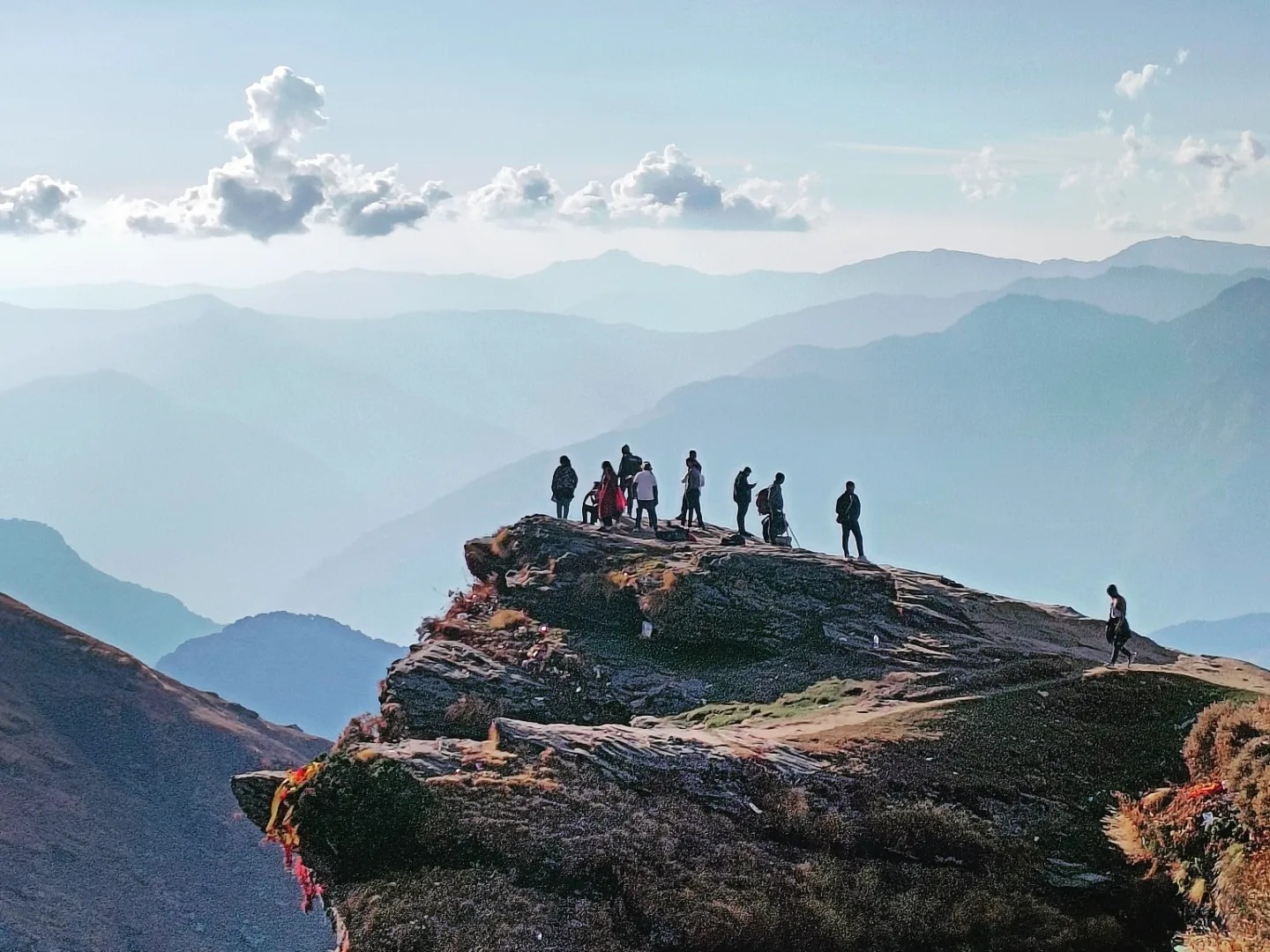
Stay Hydrated
Dehydration is one of the most common issues trekkers face in the mountains. At higher altitudes, the air is dry, and physical exertion increases water loss from your body.
- Tips for Staying Hydrated:
- Carry a reusable water bottle and refill it whenever possible. Some homestays and campsites along the route may have access to clean drinking water.
- Drink small sips of water frequently rather than gulping large amounts at once.
- Consider carrying electrolyte tablets or packets of ORS (Oral Rehydration Solution) to replenish lost salts and minerals.
- Avoid consuming alcohol or heavily caffeinated drinks, as they can dehydrate you further.
Follow Your Guide’s Advice
Your local guide is your best ally on the trek. They are familiar with the terrain, weather patterns, and potential risks, making their advice invaluable.
- Why Guides Matter:
- Guides know shortcuts, safe routes, and how to handle emergencies.
- They can identify signs of altitude sickness or exhaustion in trekkers and act promptly.
- What to Do:
- Always stay within sight of your guide, especially in tricky sections like steep ascents or rocky paths.
- If your guide advises turning back due to bad weather or unsafe conditions, trust their judgment—it’s for your safety.
- Ask questions if you’re unsure about anything, such as trail directions or what lies ahead.
Pack Smart and Light
Overpacking can weigh you down and make the trek unnecessarily exhausting. However, skipping essential items can leave you unprepared for emergencies. Strike a balance by packing smartly.
- Essential Items to Carry:
- First-Aid Kit: Include band-aids, antiseptic wipes, painkillers, anti-nausea medication, and any personal prescriptions.
- Energy Snacks: Pack high-energy foods like nuts, chocolates, energy bars, or dried fruits to keep your energy levels up.
- Headlamp/Flashlight: In case you start early or return late, a headlamp is handy for navigating in low light.
- Rain Gear: Carry a compact poncho or raincoat, as sudden showers are common in the mountains.
- Personal Documents: Keep copies of your ID, medical certificates (if applicable), and emergency contact numbers.
- Avoid Overloading:
- Stick to a lightweight backpack (no more than 8-10 kg) to reduce strain on your back and shoulders.

Respect Nature and Wildlife
The Himalayas are home to diverse flora and fauna, and it’s our responsibility to protect this fragile ecosystem.
- Do’s:
- Stick to designated trails to avoid damaging vegetation.
- Dispose of trash responsibly. Carry all waste back to disposal points—never leave litter behind.
- Maintain a safe distance from wildlife. Do not feed or disturb animals.
- Don’ts:
- Avoid picking flowers, plants, or rocks as souvenirs.
- Refrain from playing loud music or making unnecessary noise that could disturb the natural habitat.
- Never venture into restricted areas marked by forest authorities.
Check the Weather Before You Go
Weather conditions in the mountains can change suddenly, impacting visibility and trail safety. Being aware of the forecast helps you plan better.
- How to Prepare:
- Check the weather report a few days before your trek and again on the morning of your departure.
- If heavy rains, snowfall, or storms are predicted, consider postponing your trek or adjusting your itinerary.
- Carry a lightweight raincoat or poncho, even if the forecast looks clear—it’s better to be prepared.
- During the Trek:
- Keep an eye on the sky. Dark clouds, strong winds, or sudden drops in temperature are signs of incoming bad weather.
- If caught in a storm, seek shelter immediately and wait until conditions improve.
Trek with a Buddy
While solo trekking can be rewarding, it’s safer to hike with a partner or group, especially in remote areas like Chopta .
- Why It’s Important:
- Having someone with you ensures help is readily available in case of injuries or emergencies.
- Group treks are often more fun, as you can share experiences and motivate each other.
- What to Do:
- Stick close to your group and avoid wandering off alone.
- If you’re traveling solo, let your guide or fellow trekkers know where you’re going and when you’ll return.

Know Emergency Contacts
Being prepared for emergencies is crucial, especially in remote locations where help may not be immediately accessible.
- Important Numbers to Save:
- Local Police Station: For general assistance.
- Forest Department: In case of wildlife encounters or getting lost.
- TourMyHoliday Helpline: For immediate support from your travel provider.
- Family/Friends: Share your itinerary with them so they know your whereabouts.
- What to Do in an Emergency:
- Stay calm and assess the situation.
- Inform your guide or group leader immediately.
- Use your phone to call for help if there’s network coverage. Otherwise, signal for assistance using whistles, mirrors, or bright-colored clothing.
Take It Slow and Enjoy the Journey
The Chopta Chandrashila Trek is not a race—it’s about immersing yourself in the beauty of nature and enjoying every step of the way.
- Why It’s Important:
- Rushing can lead to fatigue, accidents, or missing out on the scenic views around you.
- Walking slowly allows your body to conserve energy and reduces the risk of injuries.
- How to Pace Yourself:
- Walk at a steady pace without overexerting yourself.
- Take breaks every 45-60 minutes to rest and hydrate.
- Stop frequently to admire the stunning landscapes—from the reflection of peaks in Deoriatal to the panoramic views from Chandrashila Summit .

Accommodation Options in Chopta and Nearby Areas
When embarking on the Chopta Chandrashila Trek , you’ll typically stay in Sari Village , Chopta , or nearby campsites. These accommodations provide a cozy and immersive experience in the lap of nature. Below are the main types of accommodation options available:
Homestays
- What It Is: Homestays are locally run guesthouses where you live with or near local families. They offer basic yet comfortable rooms with attached bathrooms and meals included.
- Why Choose It:
- Experience authentic village life and interact with locals.
- Enjoy home-cooked meals made from fresh, locally sourced ingredients.
- Cost-effective and eco-friendly.
- Best For: Travelers looking for a cultural and budget-friendly experience.
- Where to Find Them: Homestays are widely available in Sari Village and Chopta .
Camping
- What It Is: Camping is one of the highlights of the Chopta Chandrashila Trek . You’ll sleep in tents set up in scenic locations like Chopta or near Deoriatal .
- Why Choose It:
- Experience the thrill of sleeping under the stars and waking up to stunning mountain views.
- Bonfires and group activities add to the fun and camaraderie.
- Perfect for adventurers who want to connect deeply with nature.
- Best For: Nature lovers, solo travelers, and groups seeking adventure.
- Facilities: Most camps provide sleeping bags, mattresses, and basic amenities like toilets and dining tents.

Guesthouses and Budget Hotels
- What It Is: Small guesthouses and budget hotels are available in Chopta and nearby towns. These offer simple rooms with basic facilities like beds, blankets, and attached bathrooms.
- Why Choose It:
- More private than homestays or camping.
- Affordable and convenient for short stays.
- Best For: Families, couples, or travelers who prefer a bit more privacy and comfort.
- Where to Find Them: Look for guesthouses in Chopta and nearby towns like Ukhimath or Guptkashi .
Luxury Resorts (Nearby)
- What It Is: If you’re looking for a more upscale experience, luxury resorts are available in nearby towns like Rudraprayag or Kotdwar (though they are farther from the trekking base).
- Why Choose It:
- Modern amenities such as hot water, room service, and Wi-Fi.
- A chance to relax in style after completing the trek.
- Best For: Travelers who want to combine adventure with luxury.
- Note: These resorts are not directly on the trek route, so additional travel may be required.
Seasonal Considerations for the Chopta Chandrashila Trek
The Chopta Chandrashila Trek can be enjoyed year-round, but the experience varies significantly depending on the season. Each season has its own charm and challenges, so choose the one that aligns with your preferences.
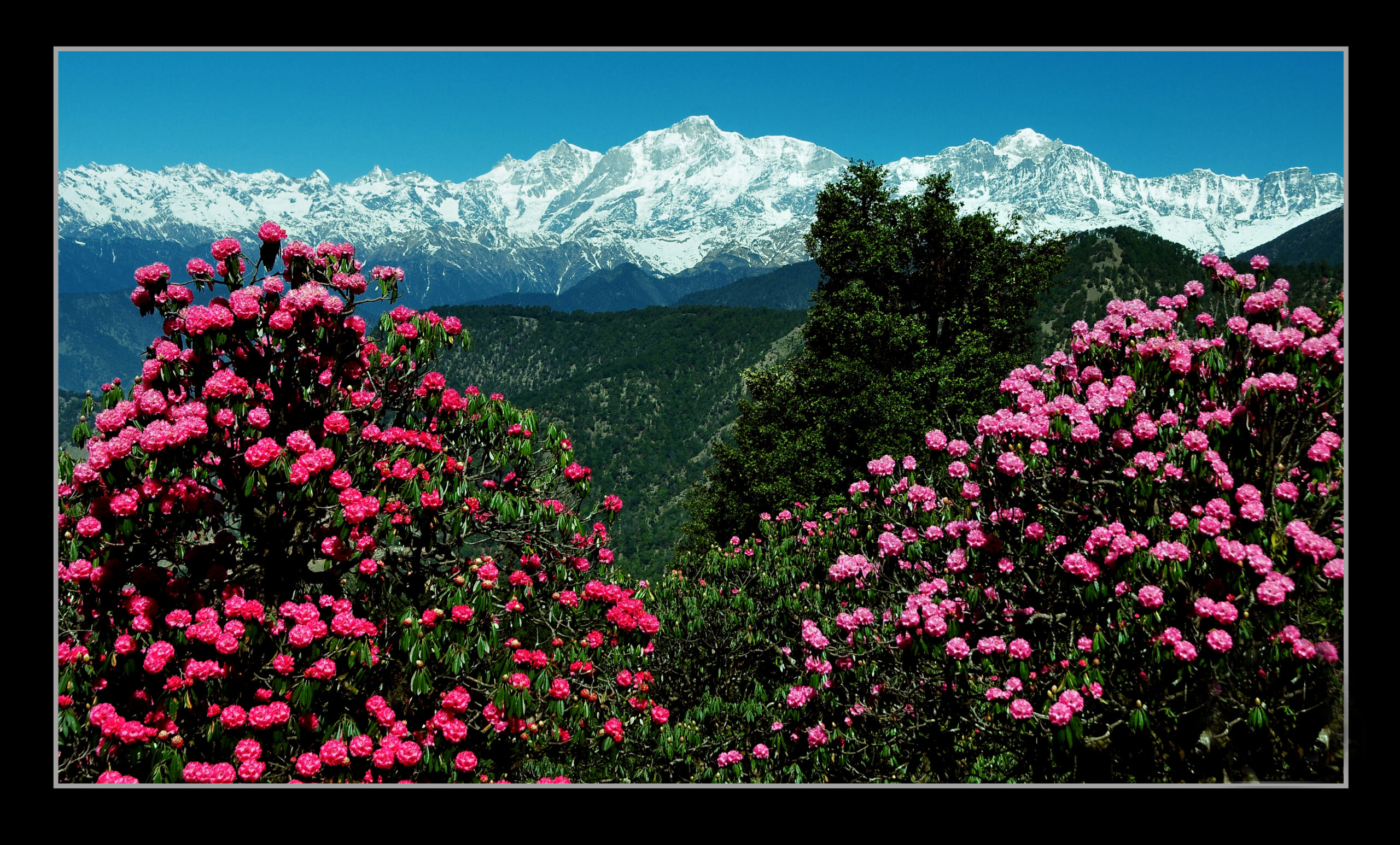
Spring (March to May)
- Weather: Mild and pleasant, with daytime temperatures ranging from 15°C to 25°C. Nights can still be chilly, especially at higher altitudes.
- Highlights:
- Rhododendron forests are in full bloom, painting the trails with vibrant red and pink hues.
- Clear skies offer breathtaking views of the Himalayan peaks.
- Ideal weather for trekking, making it the most popular season.
- Challenges:
- Trails may be crowded due to peak tourist season.
- Accommodations fill up quickly, so book early.
Summer (June to August)
- Weather: Warm during the day (20°C to 30°C) but cooler at night. Monsoon rains begin in late June and continue through August.
- Highlights:
- Lush greenery and waterfalls make the landscape incredibly vibrant.
- Fewer tourists compared to spring, offering a quieter experience.
- Challenges:
- Rainfall can make trails slippery and treacherous.
- Leeches may be present in some areas during the monsoon.
- Limited visibility due to clouds obscuring the peaks.
- Tip: Carry waterproof gear and avoid trekking during heavy rains.
Autumn (September to November)
- Weather: Cool and crisp, with daytime temperatures around 10°C to 20°C. Nights are colder, especially at higher altitudes.
- Highlights:
- Clear skies and stunning views of snow-capped peaks like Nanda Devi and Trishul .
- Pleasant weather makes it an excellent time for trekking.
- Fewer crowds compared to spring.
- Challenges:
- Nights can get very cold, so pack extra layers.
- Some accommodations may close after October as winter approaches.

Winter (December to February)
- Weather: Cold and snowy, with temperatures dropping below freezing at higher altitudes (-5°C to 10°C). Lower regions like Chopta remain accessible but may have frosty mornings.
- Highlights:
- Snow-covered landscapes create a magical, fairy-tale-like ambiance.
- Fewer tourists, ensuring a peaceful and serene experience.
- Perfect for snow enthusiasts and photographers.
- Challenges:
- Trekking can be physically demanding due to snow and icy trails.
- Some high-altitude sections, like Tungnath Temple , may be inaccessible due to heavy snow.
- Limited accommodation options; many homestays and campsites close during this season.
- Tip: Carry thermal clothing, sturdy boots, and trekking poles for better grip on icy paths.
Which Season is Best for You?
Choosing the right season depends on what you’re looking for:
- For Beginners: Spring (March to May) is ideal due to pleasant weather and clear trails.
- For Solitude Seekers: Autumn (September to November) offers fewer crowds and stunning views.
- For Adventure Enthusiasts: Winter (December to February) provides a unique snow trekking experience.
- For Budget Travelers: Avoid peak seasons like spring to find better deals on accommodations.
How to Reach Chopta: Your Unique Journey to the Himalayas Begins Here
Reaching Chopta is as much a part of the adventure as the trek itself. While many travel guides stick to the usual details, we’re here to give you fresh, creative, and practical insights into making your journey to this Himalayan gem truly special. Whether you’re traveling from Delhi or elsewhere, here’s how you can turn your commute into an unforgettable experience:
.jpeg)
Road Trip Magic: The Scenic Route to Chopta
If you love road trips, this is the way to go. Driving to Chopta isn’t just about reaching a destination—it’s about savoring every twist and turn of the journey through the majestic Himalayas.
- Why It’s Unique: You’ll pass through lush valleys, charming villages, and riverside towns that feel like they’re straight out of a postcard.
- Route Highlights:
- Delhi to Rishikesh (240 km): Kick off your trip with a drive through the picturesque foothills of Uttarakhand. Stop at Haridwar for a quick spiritual detour at the Ganga Aarti.
- Rishikesh to Devprayag (75 km): Witness the confluence of the Bhagirathi and Alaknanda rivers at Devprayag Sangam —a sight that feels almost magical.
- Devprayag to Chopta (180 km): As you ascend higher, the roads get narrower but infinitely more scenic. Keep your camera ready for impromptu photo stops of terraced fields, gushing streams, and snow-capped peaks in the distance.
- Night Travel: Sleep, Wake Up, and Voilà—You’re in the Mountains!
For those who want to save time and wake up closer to the action, overnight travel is the ultimate hack.
- How It Works: Board a private or shared vehicle from Delhi late at night (around 10 PM) and sleep through most of the journey. By morning, you’ll be greeted by the fresh mountain air of Sari Village or Chopta .
- What Makes It Special: Imagine dozing off to the hum of the highway and waking up to misty mountains and chirping birds—a seamless transition from city chaos to serene wilderness.
- Bonus Stops: Most operators include a quick halt at Devprayag Sangam , where you can stretch your legs and soak in the spiritual vibes before continuing your journey.
Train + Taxi Combo: A Budget-Friendly Yet Scenic Option
If you’re looking for a mix of comfort and affordability, this route is a hidden gem.
- Step 1: Take an overnight train from Delhi to Haridwar or Kotdwar . Opt for sleeper or AC coaches to rest comfortably.
- Step 2: From Haridwar/Kotdwar, hire a taxi or shared cab to Chopta. This leg takes 6-8 hours but offers stunning views of the Himalayan foothills.
- Why It’s Worth It: Trains are eco-friendly, cost-effective, and let you experience the charm of Indian railways. Plus, you avoid long hours behind the wheel, leaving you refreshed for the trek.
Helicopter Ride: Arrive Like Royalty
Want to skip the long drive altogether? Consider taking a helicopter ride—an unconventional yet luxurious way to reach Chopta.
- Where to Board: Helicopter services are available from Dehradun or other nearby towns. Some operators also offer charter flights directly to remote areas near Chopta.
- Why It’s Extraordinary: Flying over the Himalayas gives you a bird’s-eye view of the region’s unparalleled beauty. Picture glacial streams, dense forests, and towering peaks unfolding beneath you—it’s a once-in-a-lifetime experience.
- Who Should Try It: Ideal for those short on time or seeking a touch of luxury. It’s also perfect for families with elderly members or anyone who prefers skipping bumpy roads.
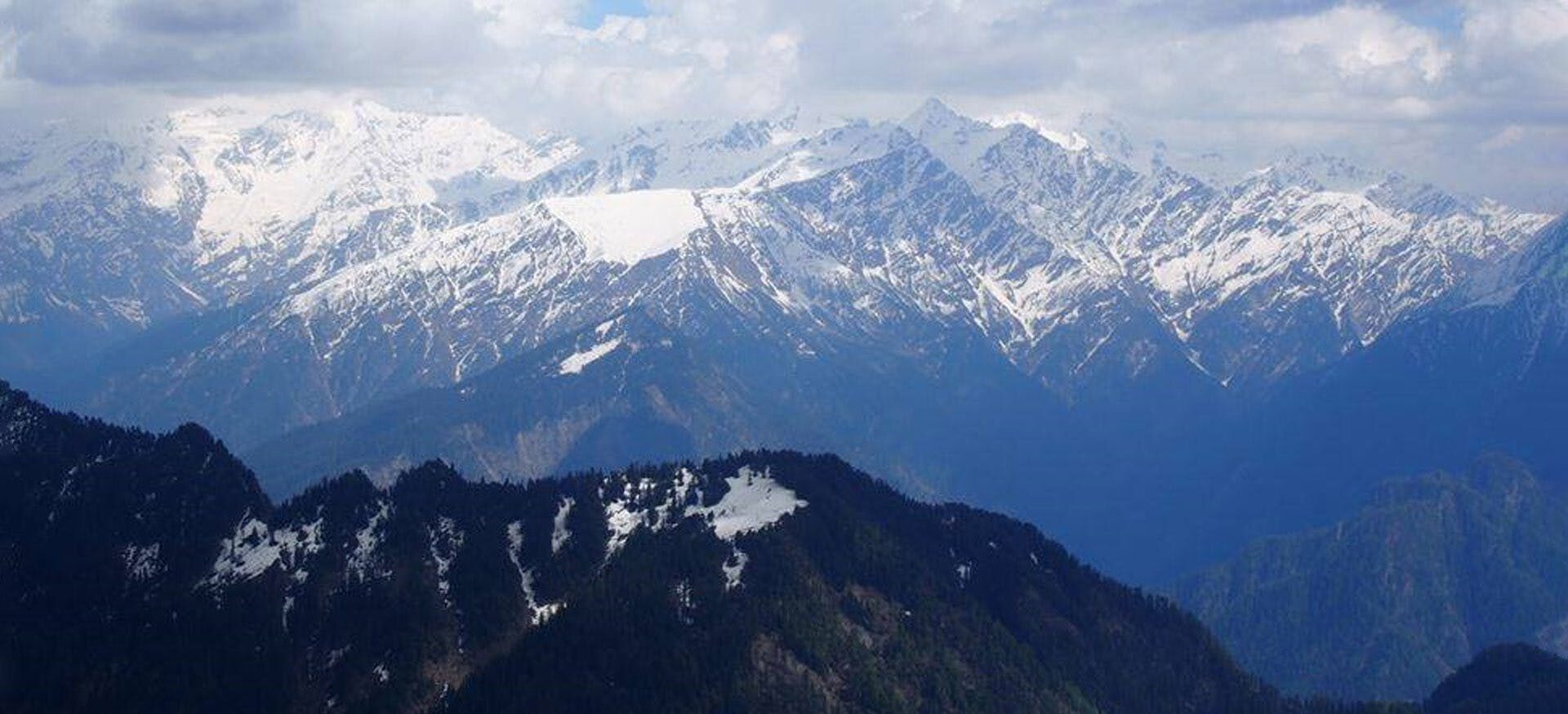
Cycling Adventure: Pedal Your Way to Paradise
For fitness enthusiasts and adventurers, cycling to Chopta is the ultimate challenge—and reward.
- The Route: Start from Rishikesh and pedal uphill through winding roads, quaint villages, and apple orchards. The elevation gain might test your endurance, but the sense of accomplishment is unmatched.
- What Sets It Apart: Every kilometer feels earned, and every hill conquered brings you closer to nature. Plus, you’ll have stories no one else can match!
- Tips for Cyclists:
- Plan for 2-3 days to complete the journey without rushing.
- Carry lightweight gear, energy snacks, and plenty of water.
- Stay overnight in small towns like Rudraprayag or Ukhimath to break the journey.
Motorbike Odyssey: Feel the Freedom of the Open Road
Few things beat the thrill of riding a motorbike through the Himalayas. If you’re a fan of two-wheel adventures, this is your golden opportunity.
- The Experience: Roar past cascading waterfalls, zip through pine forests, and navigate hairpin bends with the wind in your face. Each moment feels like freedom personified.
- Best Routes:
- Delhi to Chopta via Mussoorie: A slightly longer but incredibly scenic route.
- Delhi to Chopta via Rishikesh: Shorter and more direct, with equally breathtaking views.
- Gear Up: Ensure your bike is in top condition, carry warm clothing for high-altitude sections, and pack essentials like tools, first aid, and rain gear.
Public Transport Hack: Backpacker Style
Traveling solo or on a shoestring budget? Public transport might sound daunting, but it’s surprisingly doable—and even fun—with a little planning.
- Step-by-Step Guide:
- Take a bus or train to Haridwar or Rishikesh .
- From there, board a state-run bus to Rudraprayag or Ukhimath .
- Finally, hire a local jeep or shared taxi to Chopta.
- Why Choose This: It’s wallet-friendly, lets you interact with locals, and gives you a taste of rural Uttarakhand life.
- Insider Tip: Buses and shared taxis may not always run on strict schedules, so factor in extra time for delays.\
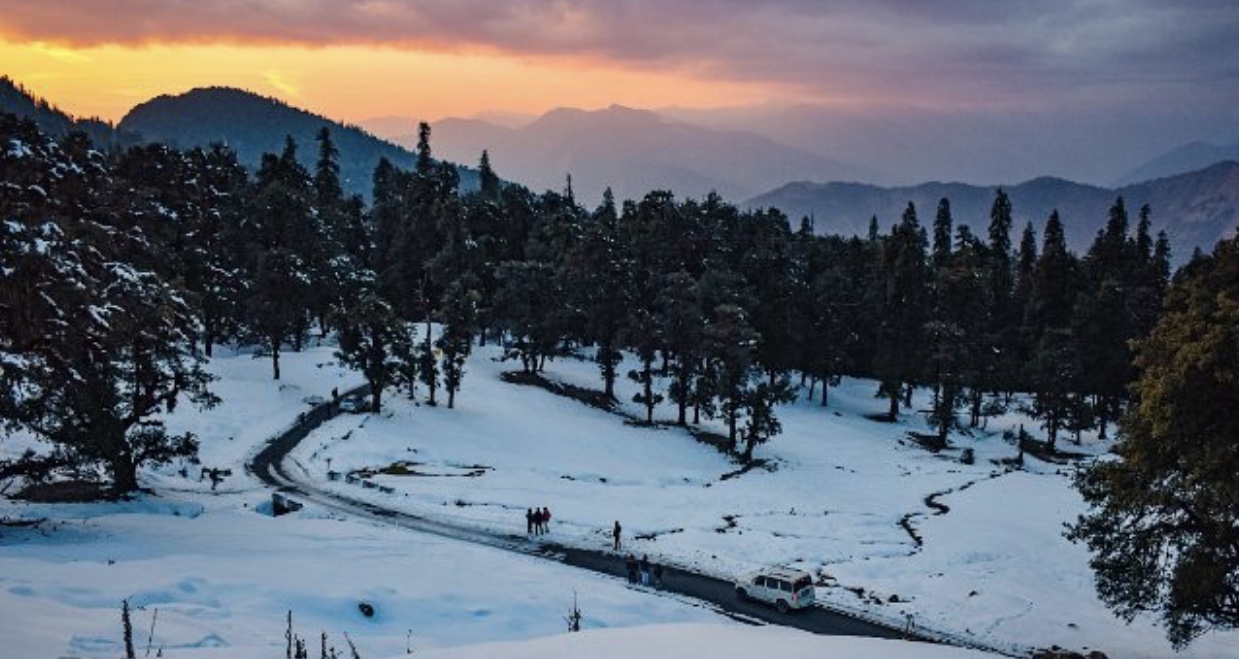
Combine Pilgrimage and Adventure: Spiritual Detours Along the Way
If you’re spiritually inclined, why not blend devotion with adventure?
- Stop at Dhari Devi Temple: Located en route to Chopta, this revered shrine of Goddess Kali is believed to protect travelers. Pay your respects for safe travels ahead.
- Visit Omkareshwar Temple: Near Guptkashi, this ancient temple serves as the winter abode of Lord Kedarnath. Its tranquil ambiance makes it a peaceful pit stop.
Frequently asked questions about Chopta
What is the best time to visit Chopta?
The ideal periods are from April to June and October to November, offering pleasant weather and clear views. Winter months (December to February) attract visitors for snowfall experiences.
How can I reach Chopta from Delhi?
Chopta is approximately 400 km from Delhi, taking around 10-12 hours by road. Travelers can drive or take buses to Rishikesh or Haridwar, then proceed to Chopta via taxi or local transport.
Is Chopta suitable for family trips?
Yes, Chopta's tranquil environment and moderate treks make it ideal for families seeking nature and adventure.
What accommodation options are available in Chopta?
Chopta offers various accommodations, including guesthouses, campsites, and eco-lodges, catering to different budgets.
Are there ATMs in Chopta?
No, Chopta lacks ATM facilities. It's advisable to carry sufficient cash, with the nearest ATMs located in towns like Ukhimath, Rudraprayag, and Guptkashi.
What are the main attractions in Chopta?
Key attractions include the Tungnath Temple, Chandrashila peak, Deoria Tal, and the surrounding meadows offering stunning Himalayan vistas.
Is Chopta safe for solo travelers?
Yes, Chopta is considered safe for solo travelers. Standard precautions are recommended, and informing someone about your plans is advisable.
Can I visit Chopta during the monsoon season?
While Chopta's beauty is enhanced during monsoons (July-August), heavy rainfall can lead to slippery trails and potential landslides, making travel challenging.
What should I pack for a trip to Chopta?
Essentials include warm clothing, trekking gear, comfortable shoes, sunscreen, a first-aid kit, and reusable water bottles. In winter, heavy woolens and snow gear are necessary.
Are guided treks available in Chopta?
Yes, local guides offer treks to Tungnath, Chandrashila, and Deoria Tal, enhancing the experience with their expertise.
Is there mobile network connectivity in Chopta?
Mobile connectivity is limited. BSNL and Jio networks have better coverage, but it's advisable to inform contacts about potential communication gaps.
What is the difficulty level of treks in Chopta?
Treks like Tungnath and Chandrashila are moderate, suitable for beginners with reasonable fitness levels.
Can I experience snowfall in Chopta?
Yes, snowfall typically occurs from December to February, transforming Chopta into a winter wonderland.
Are there medical facilities in Chopta?
Basic medical facilities are available, but for serious medical issues, the nearest hospitals are in Ukhimath and Rudraprayag.
Is camping allowed in Chopta?
Yes, camping is popular, with several operators offering tents and necessary amenities amidst nature.
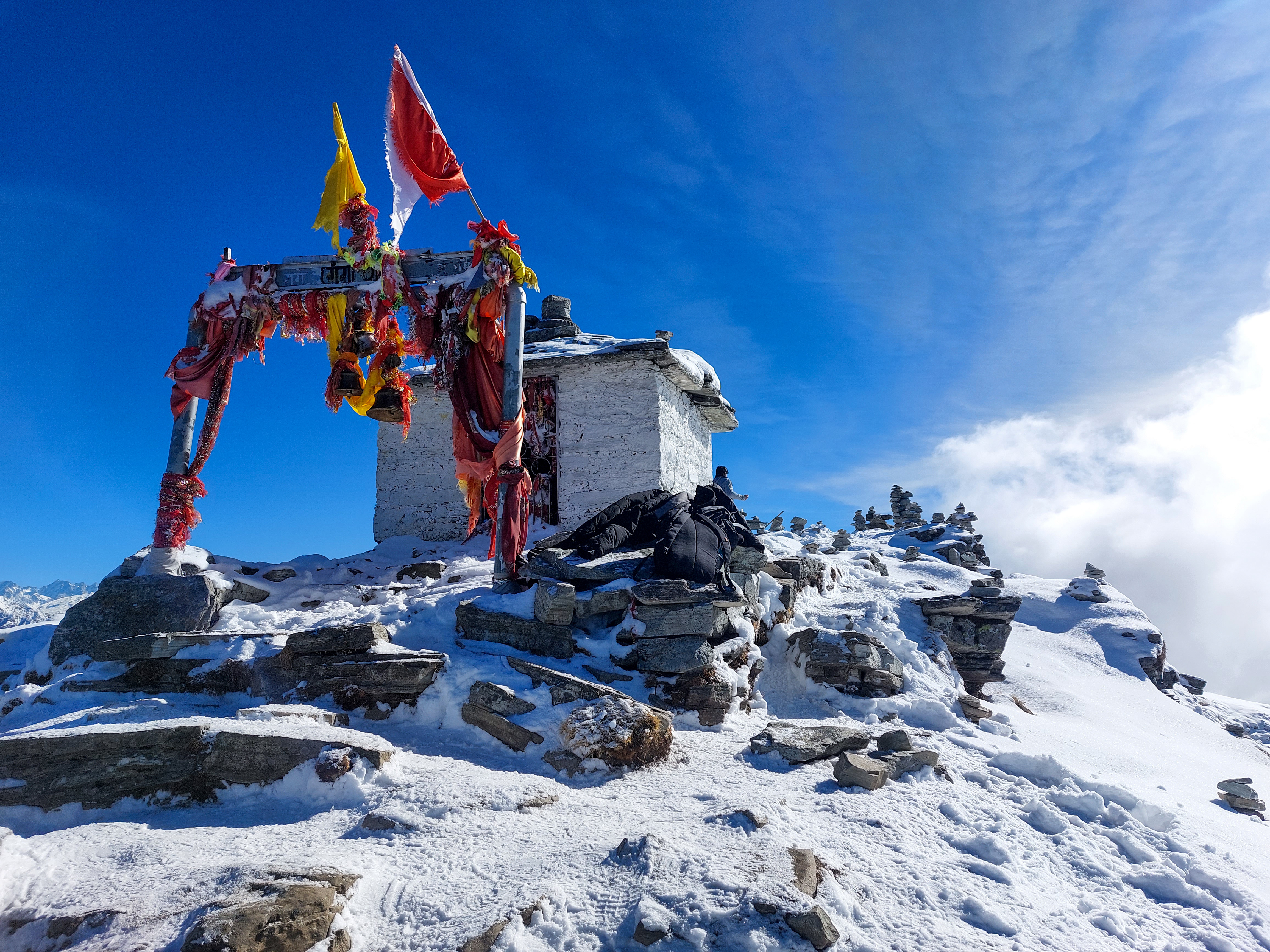


.jpg)
